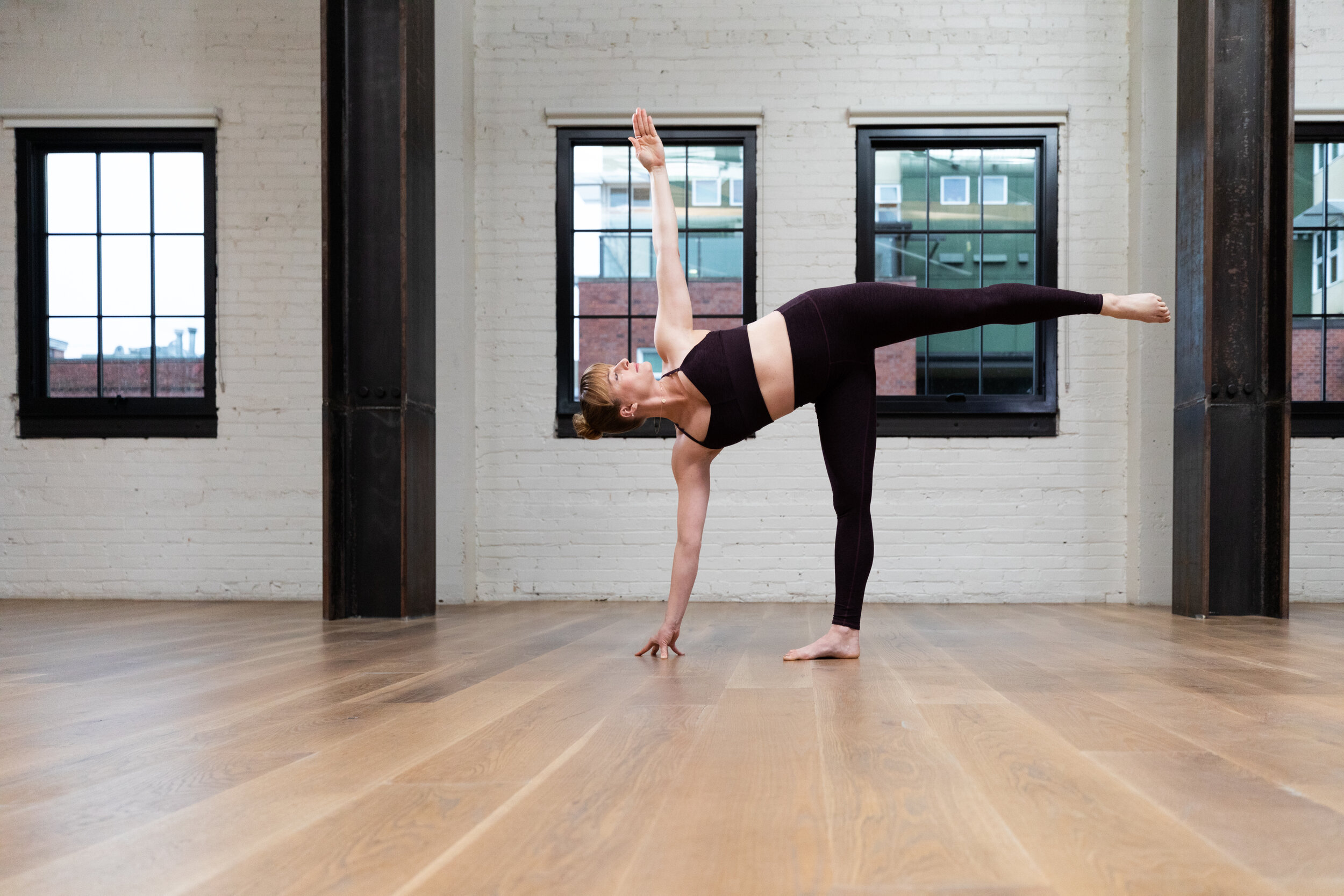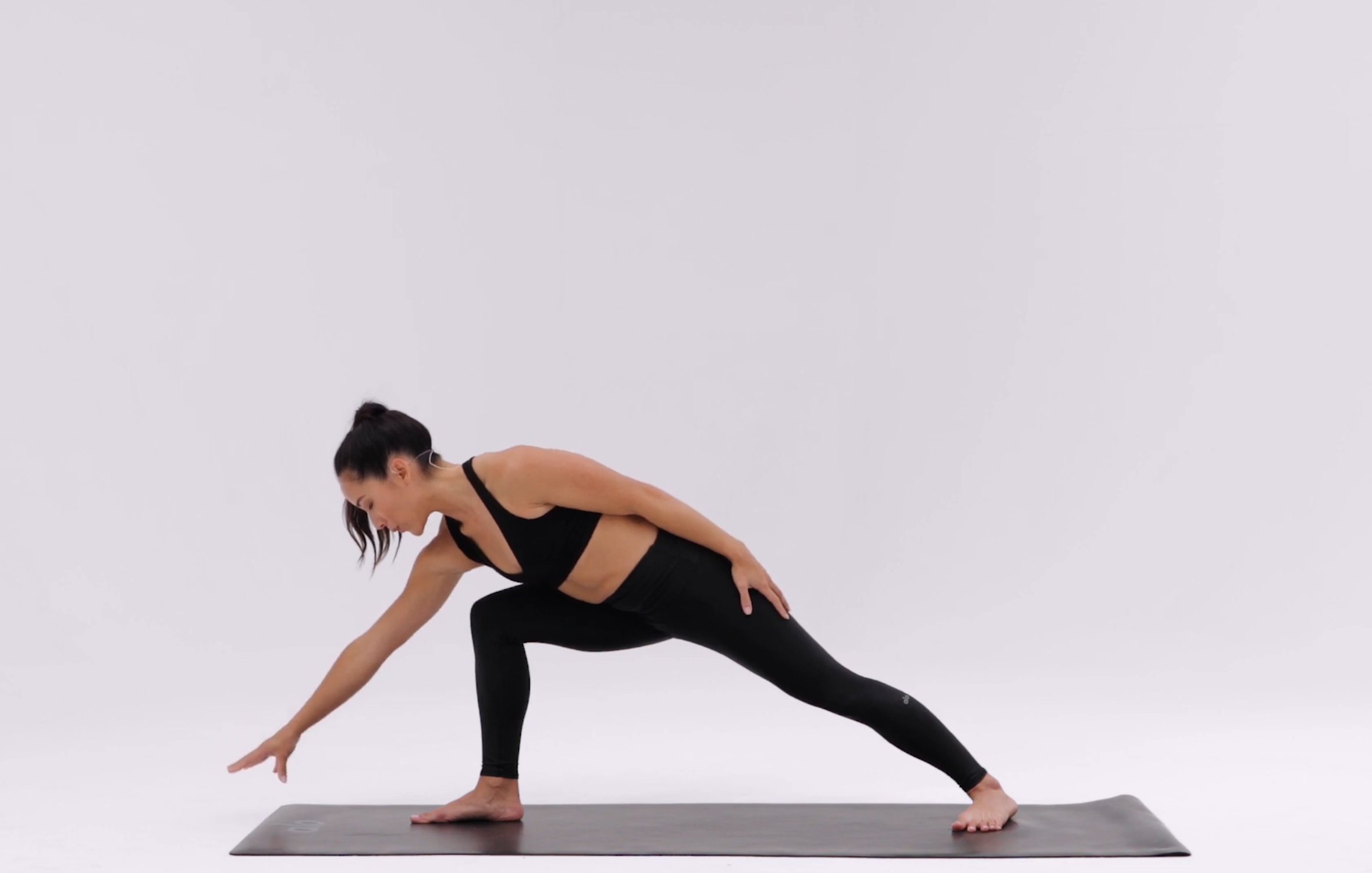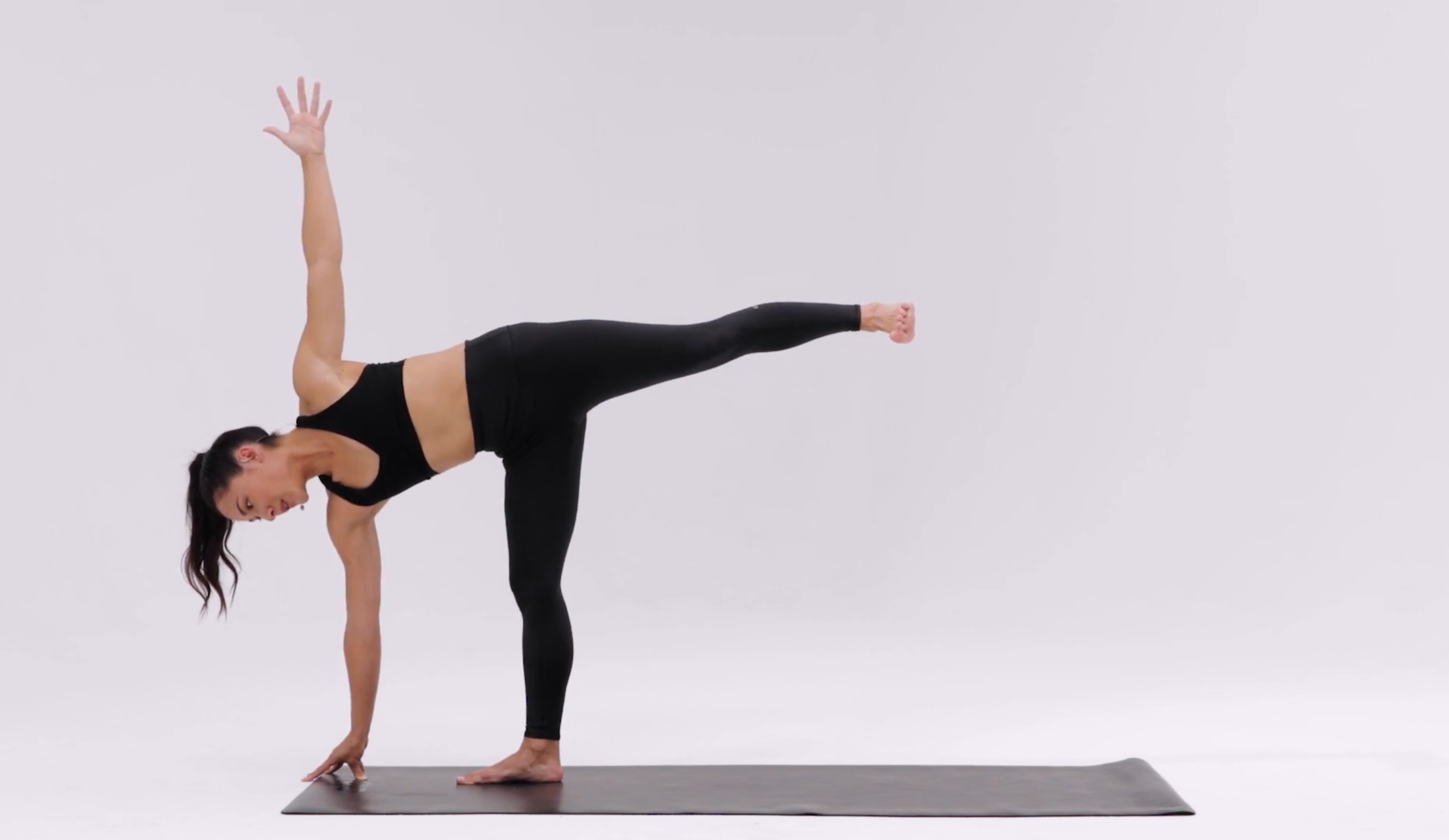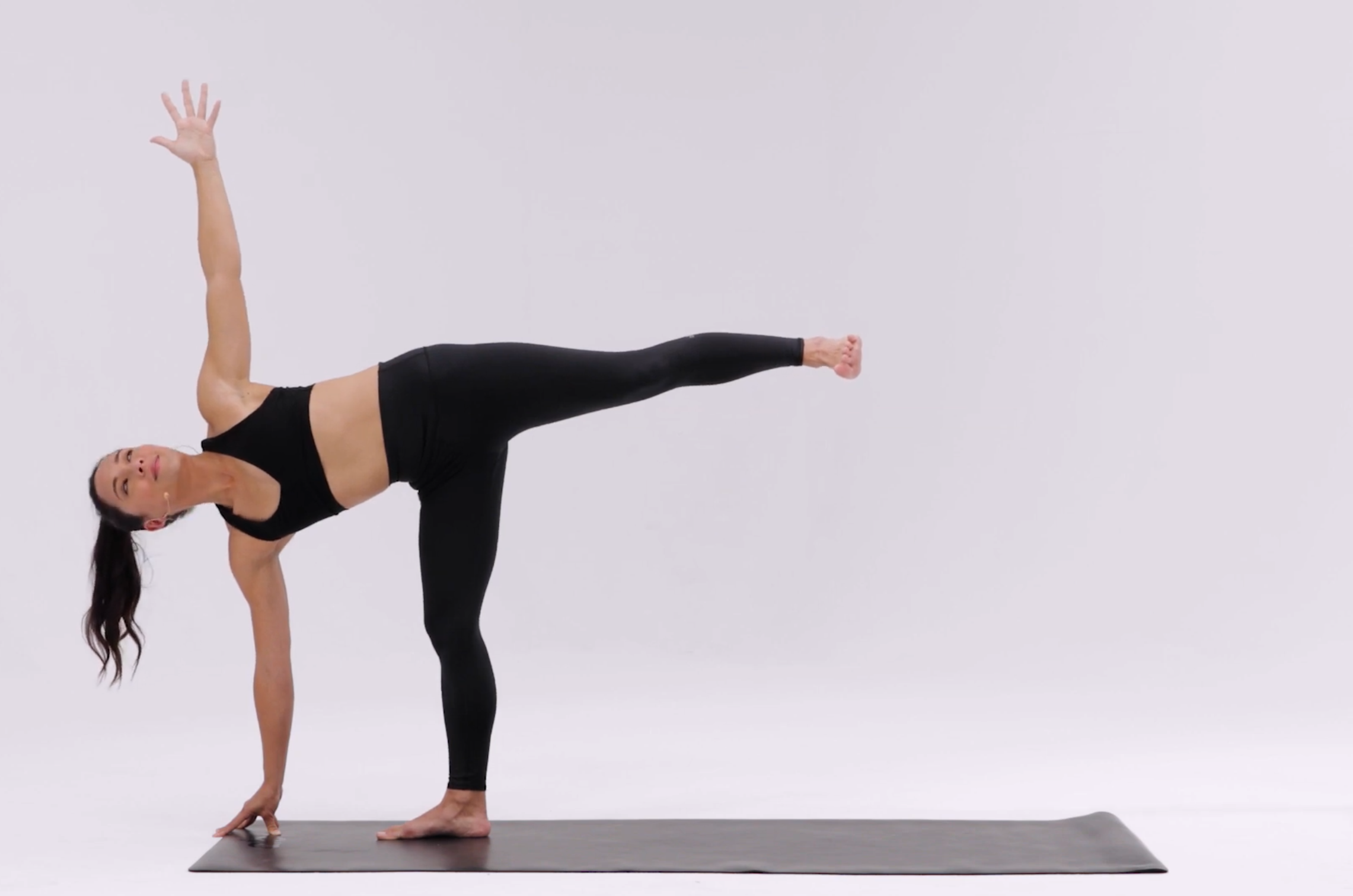Pose Breakdown: Half Moon
Half Moon Pose, or Ardha Chandrasana, is a fun, expansive standing balance. Often sequenced after Triangle or Extended Side Angle pose, Half Moon looks a little bit like pausing mid-cartwheel, with your arms and legs outstretched and only one side of your body making contact with the floor. This pose leaves your hips and heart open, countering the binding and compression that often comes before it.
Like any balancing pose, Half Moon can be challenging at first — but some pretty simple modifications can provide some significant support. It’s also scalable into more advanced postures, making it a versatile pose for yogis of most levels. Try using it to add a little extra spice to your Dancing Warrior!
Benefits of Half Moon
Strengthens your core and lower body
Stretches your spine, shoulders, and chest
Improves coordination and balance
Relieves stress
Improves digestion
Opens hips
Prep Poses for Half Moon
Triangle
Revolved Triangle
Extended Side Angle
Side Plank
One-Legged Tadasana
Warrior II
Warrior III
Contraindications
Talk to your doctor before practicing Half Moon if you have knee pain or stability issues, a back or shoulder injury, low blood pressure, a severe headache, or a foot injury.
How to Do Half Moon Pose
1.
Start in Triangle or Extended Side Angle pose, placing one hand on your back leg’s hip and reaching your other hand forward.
2.
Shift your weight into your front leg and lift your back leg up, flexing your back foot with your toes facing the side of the mat.
3.
Root down through all four corners of your standing foot and lift your kneecap up, firming the outer hip in toward your midline.
4.
Make sure that your bottom arm’s fingertips are underneath your shoulder.
5.
Gaze down and reach your top arm up toward the sky, creating a vertical line with both arms.
6.
For an extra challenge, bring your gaze out to the side or up toward your top hand.
Modifications
Place a block in front of your standing foot before coming into Half Moon, then bring your bottom arm to the block instead of the floor. This can help you balance and focus on form, especially if it’s hard for your hand to reach the ground. You can also practice this pose with a wall in front of you for even more support.
Want something more challenging? Build on your Half Moon practice with challenging variations like Revolved Half Moon and Sugarcane!
Follow Up Poses for Half Moon
Warrior II
Reverse Warrior
Wide-Legged Forward Fold
Half Moon Pose Name Meaning
The Sanskrit name Ardha Chandrasana literally translates to Half Moon Pose: ardha for half, chandra for moon, and asana for posture or seat. What we now know as Half Moon came from BKS Iyengar’s iconic 1966 text Light on Yoga. In other yogic traditions, the pose called Half Moon has varied significantly, including postures similar to Tree or Pigeon.
Ready to put your Half Moon into practice? Try it in flows like You and the Mat with Ashley Galvin, available for free with a 14-day trial to Alo Moves.








